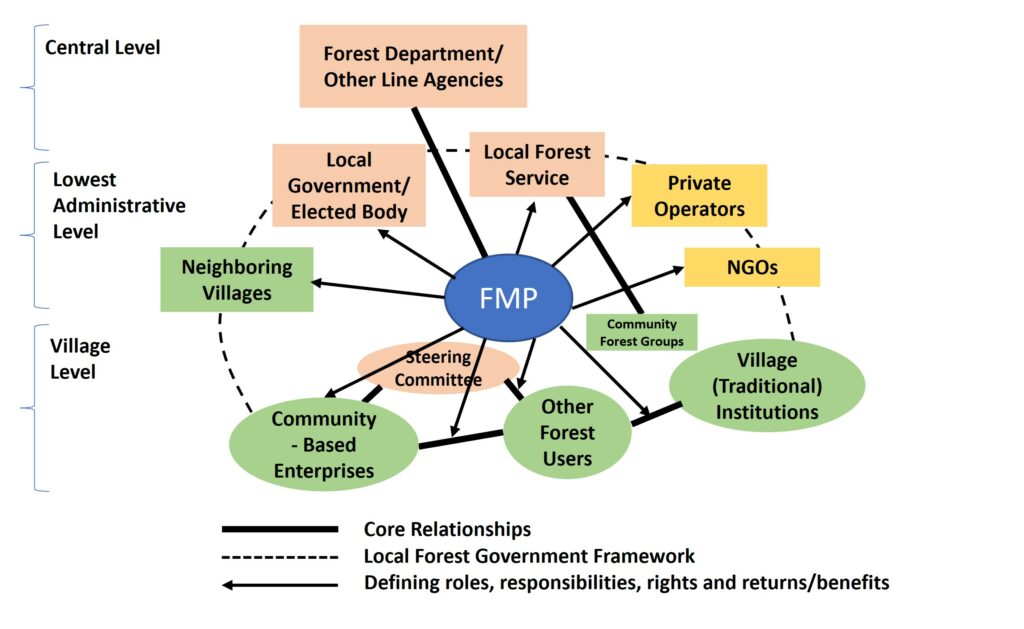Introduction to Forest Management
Forest management is an important process for maintaining the health of forests and their inhabitants. It involves controlling the security of the forest, preserving its ecosystem, and improving wood goods and services production. Forest management plans aim to strike a balance between conservation and other activities such as recreation and a sustainable forest products industry. This helps ensure that local governments and private enterprises meet public needs while maintaining a healthy environment.
Uncontrolled deforestation and pollution can cause serious damage to the environment, so it is essential that forests are managed properly. Forests provide many benefits, including water catchment areas, native timber industries, recreation and tourism drawcards, cultural heritage sites, and more. In order to withstand changing climate conditions, these forests must remain healthy enough to continue providing these services. Forest management plans help ensure that this happens by striking a balance between conservation efforts and other activities such as recreation or timber production.
What is Forest Management Planning?
Forest management planning (FMP) is an important part of ensuring the sustainability of forests and their resources. It involves creating a vision for the forest, developing a plan of action to achieve it, and keeping track of activities. It is also essential that proper communication is exchanged between the communities and the professionals in order to ensure that everyone is on the same page when it comes to managing the forest. This is important as FMP can be used an an instrument to further regulate local forest governance based on multi-stakeholder agreements. Click here to read about the Joint Forest Management in India.
Additionally, earning green certification can help demonstrate that the forest is being managed responsibly.
When creating a plan for forest management, it is important to consider all aspects of the current condition of the forest and its resources. This includes assessing access points, harvesting trees, renewing the forest, maintenance activities and planning for future needs. All these activities must be carried out in a sustainable manner while taking into account stakeholder and public involvement as well as adaptive management strategies. By doing so, we can ensure that our forests remain healthy and productive for generations to come.
Forest Management Plans and its purpose
Forest management plans are essential documents for governments as well as landowners to ensure the health and sustainability of their woodlands. These plans provide a roadmap for managing the forest, outlining goals and objectives that will help maintain the land’s ecological balance. The plan should include maps that display the property boundaries, forest stands, roads, trails, streams, hills, wetlands, openings and buildings within the forest. Consulting foresters can help professionals write and implement their forest management plan by overseeing harvesting, road construction, invasive plant control or wildlife habitat improvement.
The main purpose of a forest management plan is to map forests into zones and establish objectives for conservation, land management and uses including timber harvesting. This helps landowners understand how best to use their resources while preserving natural habitats and ecosystems. Forest management plans must also consider potential risks such as fire hazards or pest infestations that could damage the forest.
What is required in a forest management plan?
A forest management plan is an important document that outlines a strategic vision and commitment to protect multiple forest values. It assesses the current state of the forest and details the desired future state, setting out management objectives and describing harvesting, regeneration, and other activities to achieve them. The plan aims to strike a balance between conservation and other activities, such as providing for recreation and a sustainable forest products industry, while also protecting water catchments.
Forests are valued for many reasons including their water supply, timber industries, recreation and tourism drawcard, cultural heritage, and need to be healthy enough to withstand changing climate conditions. A comprehensive forest management plan will take into account all of these factors in order to ensure that the forests are managed sustainably. This includes monitoring wildlife populations, assessing soil health, controlling invasive species, managing fire risk, restoring damaged areas of the forest, maintaining access roads and trails for recreational use.

Elements of a Forest Management Plan
The Forest Management Plan is an important document that seeks to balance conservation and other activities. It includes a property description, location and history to provide context for the plan, as well as management objectives. These can be described in detail, including their history, forest type, site index, age, timber volume by-products, and wildlife habitat quality. The plan then makes recommendations based on this information.
The plan also includes a set of activities and their timing to meet the forest committee or local community’s objectives. This includes natural resource enhancement and protection such as air, water and soil protection; wildfire prevention; fish and wildlife protection; and social considerations. A management activity schedule should also be included in the plan to outline all forest and other management activities, as well as when they occur. By following these guidelines, a comprehensive Forest Resource Management Plan can be created that will ensure sustainable use of the forests while protecting their values. It is also important to note that developing simpler and more appropriate FMPs for forest areas are more successful, especially for those that are oriented towards livelihood-based forest management objectives.
Public involvement and Indigenous consultation
Public involvement and Indigenous consultation are essential components of forest management planning. FMPs must be developed through collaboration with forest companies and government agencies, incorporating input from the public, interest groups, and Indigenous peoples. Forest companies must maintain their efforts to conduct meaningful public, interest group, and Indigenous peoples involvement throughout FMP implementation. This ensures that all stakeholders have a voice in the process and that their interests are taken into account when decisions are made.
Indigenous communities can play an important role in FMP development by having a representative on the planning team, developing a customized approach to consultation, and identifying values such as sacred lands for protection. They can also help develop and review related reports. This allows them to ensure that their interests are represented in the process and that their traditional knowledge is respected. By involving indigenous communities in FMP development, plans can be created that reflect the needs of all stakeholders while protecting the forests for future generations.
The importance of indigenous involvement in the FMP process cannot be overstated. It is essential that indigenous communities have a voice in the decision-making process so that their values can be taken into account when developing plans for managing forests. By having representatives on the planning team, engaging in meaningful consultation processes, identifying values for protection, and participating in reviews of related reports, indigenous communities can ensure that their perspectives are included in the FMP process. This will help create plans that reflect the needs of all stakeholders while protecting our forests for future generations.
Planning as a part of Forest Management
Planning is an essential part of FMP. It helps to identify opportunities, limitations, and productive capacity of a forest, as well as financial issues that motivate the forest owner. Planning also provides evidence of forest stewardship and a framework for sustainability by defining projected outputs and determining whether these are sustainable over time. Additionally, it allows for evaluation of trade-offs between goals and resolution of conflicting goals, ensures compliance with environmental laws and regulations, facilitates efficient scheduling of forest activities, and matches outputs to expected markets.
The planning process involves several steps. These include identification of goals, objectives, and timeframe of the current and future forest owner(s); assessment of the forest condition and history; analysis of data to modify management objectives due to constraints or opportunities identified; development of plan alternatives; decision by the forest owner on the selected alternative; preparation of the plan documents; implementation of the management plan strategy; followed by evaluation of results and feedback. The planning process in FMP must also ensure systems for local development and governance, and emphasize on institution accountability, community representation, economic strategies, and cultural resonance. The local governance framework is complex and sensitive. The FMP must therefore be prepared carefully and collectively with local people involved in the decision-making processes along with other stakeholders.
Figure: A Forest Management Plan within the local governance framework (Source: FAO, 2004)
Conclusion
Forest management planning is crucial to manage forests in a sustainable manner. It involves several steps, from identifying goals and objectives to implementing the plan strategy. The planning process for FMP must ensure local forest governance and include multiple stakeholders in the decision-making process. Local people such as the indigenous groups must be a crucial part of the process, as it ensures that their values are taken into account when developing plans for managing forests.



